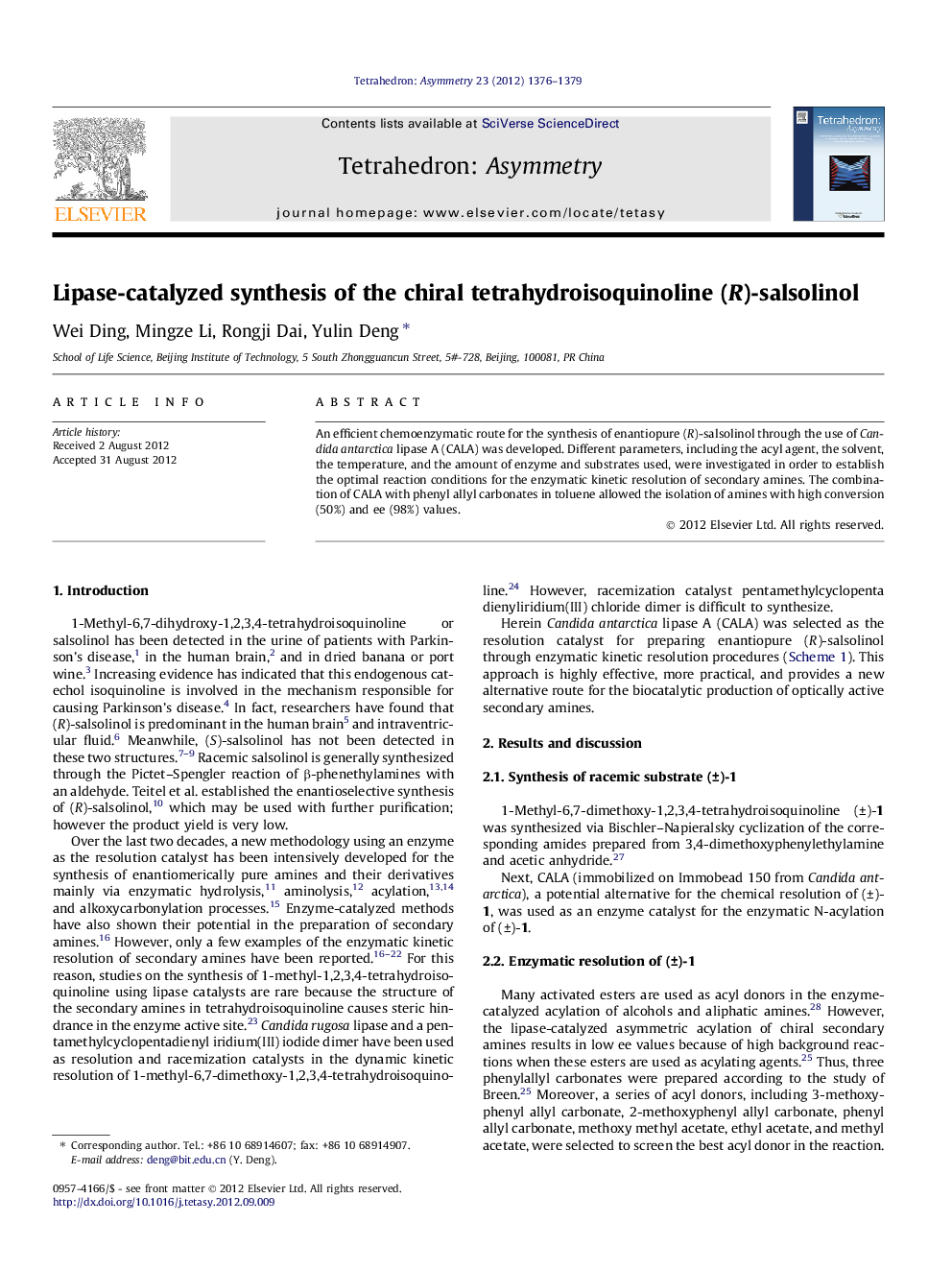| Article ID | Journal | Published Year | Pages | File Type |
|---|---|---|---|---|
| 1344030 | Tetrahedron: Asymmetry | 2012 | 4 Pages |
An efficient chemoenzymatic route for the synthesis of enantiopure (R)-salsolinol through the use of Candida antarctica lipase A (CALA) was developed. Different parameters, including the acyl agent, the solvent, the temperature, and the amount of enzyme and substrates used, were investigated in order to establish the optimal reaction conditions for the enzymatic kinetic resolution of secondary amines. The combination of CALA with phenyl allyl carbonates in toluene allowed the isolation of amines with high conversion (50%) and ee (98%) values.
Graphical abstractAn efficient chemoenzymatic route for the synthesis of (R)-salsolinol using phenyl allylcarbonates as an acyl donor. This approach allowed the isolation of amines with excellent enantioselectivity (ee 98%) and high conversion (50%).Figure optionsDownload full-size imageDownload as PowerPoint slide
(R)-1-Methyl-6,7-dihydroxy-1,2,3,4-tetrahydroisoquinolineC10H13NO2ee = 98% from HPLC[α]D25=+30.2 (c 1, MeOH)Source of chirality: kinetic resolutionAbsolute configuration: (R)
(R)-1-Methyl-6,7-dimethoxy-1,2,3,4-tetrahydroisoquinolineC12H17NO2ee = 98% from HPLC[α]D25=+59.2 (c 1, EtOH)Source of chirality: kinetic resolutionAbsolute configuration: (R)
